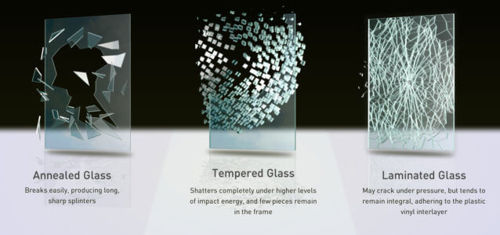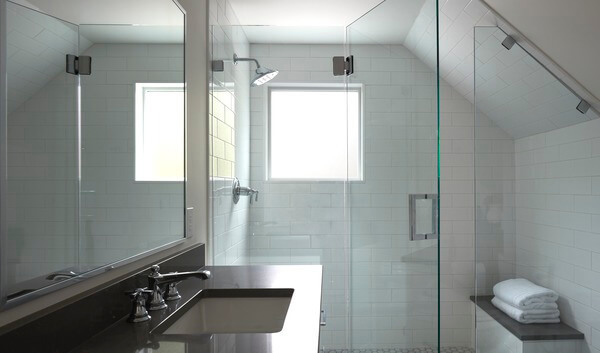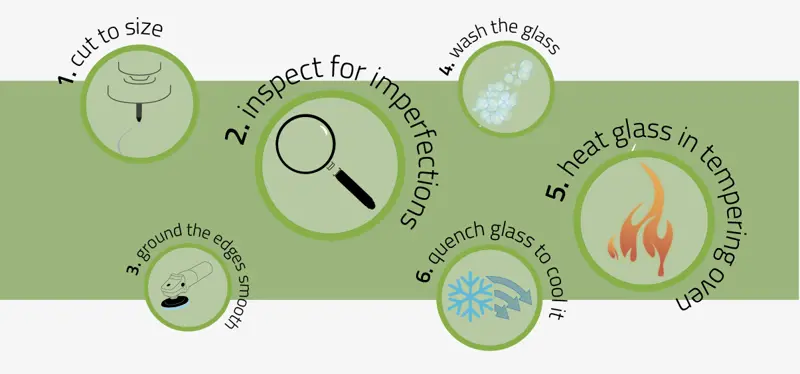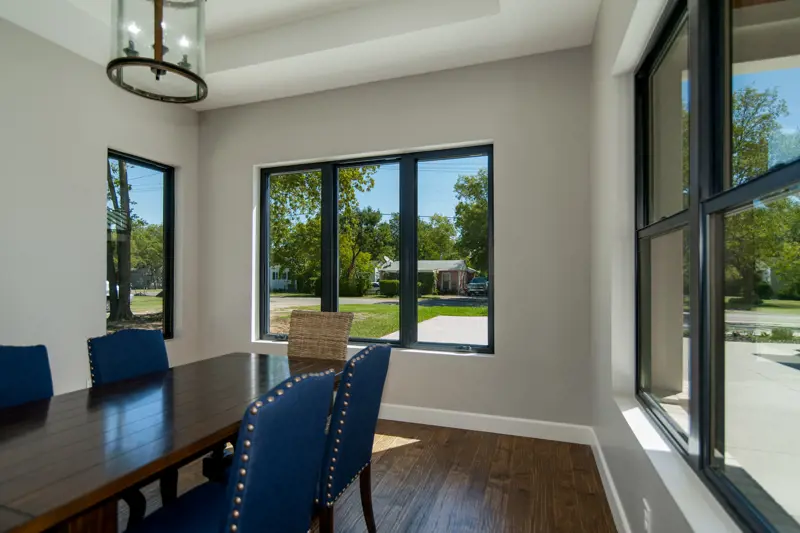
Tempered Glass vs. Laminated Glass: Comparison and Review
If you’re in the process of building or upgrading your home you may have already been asked to choose some safety glass for some of your windows and doors.
Tempered and laminated glass are the two types of safety glass you can get.
This article will review the differences between tempered and laminated glass and go into more detail on the following topics:

Example of broken glass types. Image from Pioneer Glass.
Laminated Glass
What is laminated glass?
Laminated glass is made of multiple layers or lites of glass joined by a lair of plastic called PVB (Polyvinyl butyral). It is commonly used for safety glazing.
Glazing, or safety glazing, refers to glass that has been processed to be less susceptible to breakage and more importantly to reduce the potential for serious injury when it comes to human contact..

What does laminated glass do?
If laminated glass is hit with a high-intensity impact, one side of the glass can shatter without causing the other side to shatter. Even if the glass does break on either side the pieces will stay together resulting in a spider-web pattern.
Some additional benefits of laminated glass are that it reduces transmission of high-frequency sound (soundproofing) and it blocks 97% of ultraviolet radiation. One major benefit is that laminated glass with minor impact damage can be repaired with a special clear adhesive resin.
Tempered glass
What is tempered glass?
Tempered glass, also known as toughened glass, is stronger than ordinary glass but can shatter.
What makes tempered glass safety glass is that it is significantly more durable than ordinary glass and it is designed to break into less harmful pebble-like pieces instead of sharp and jagged shards.
 What does tempered glass do?
What does tempered glass do?
Similar to laminated glass, when tempered glass suffers an impact it can break into a web-like interlocking pattern and remain within its frame. This is not always the case as the broken pieces only hold onto adjoining pieces and can fall out of their frame.
Unlike laminated glass, tempered glass cannot be repaired. Laminated glass can be repaired in cases of minor damage but damage to any part of tempered glass will eventually result in the glass shattering. The glass shatters because the balanced stresses in the glass are disturbed by the high-stress impact.
Does tempered glass cost more?
Tempered glass does cost more than standard annealed glass. Initial price estimates may not include the cost of tempering glass unless it has been specifically requested.
Make sure to discuss the added cost with your window retailer if you are requesting tempered glass or it's required to meet the building code. Some windows require tempering, but not all.
Homeowners often ask for our thoughts on tempering all of the windows on their order. Generally, we don't recommend getting tempered windows throughout your entire house. If it's not required by code then it’s best to get regular windows and save some money.
Tempering glass can increase the cost of a window anywhere from 15% to 50%, depending on the size of the glass.
However, there are special cases where tempered windows would make more sense for your home. For example, homeowners living near a golf course might consider additional tempered glass for some exterior windows if they are concerned their windows are at risk.
Despite the higher cost of tempered glass, it is still cheaper than laminated glass.
Tempered or laminated: How to choose the right safety glass
Keep in mind that both tempered glass and laminated glass qualify as safety glass and that laminated glass is more expensive than tempered glass.
Although laminated glass is stronger than tempered glass, tempered glass is more often used in household windows and doors. Due to its expensive price, laminated glass is used sparingly in residential construction.
Tempered glass offers strength and breakage resistance but laminated glass provides UV resistance, extra security, and soundproofing. Both types of glass are easy to clean and maintain as long as they are installed properly.
Tempered glass is much stronger than laminated glass and better at resisting force up to certain levels. Laminated glass is favored for security purposes, particularly in commercial buildings. The layer of PVB makes it much harder to breach, despite it not being as strong.
Tempered glass differs from laminated glass in that it is a single piece of glass. Remember, laminated glass is two pieces of glass sandwiched around a piece of plastic film.
Laminated glass is typically used as external glass. For buildings, tempered glass is often used in homes on the interior for purposes such as shower doors although it is good for tall commercial buildings for protection from the weather.
Image: Pella
In general, tempered glass is incredibly durable and reduces the risk of injury when it does break. Although it does not stay together the way that laminated glass sticks to the PVB, tempered glass breaks into small, round pieces as opposed to sharp shards with jagged edges. Broken tempered glass is easy to clean up with a vacuum or swept up using a broom and dustpan.
- Safety: Tempered and laminated glass both reduce the risk of injury due to its nature of breaking into small, circular pieces instead of sharp, jagged shards.
- Easy clean-up: Tempered glass isn’t indestructible. If the glass breaks it fractures into small fragments instead of large, jagged pieces. However, if laminated glass breaks, it will crack, but remain in one piece.
- Strength: Tempered glass is incredibly durable, but laminated glass has the edge due to the PVB layer it has.
Ask your window retailer about tempered glass
After learning about the benefits of safety glass it can seem like a good idea to use it in all applications, especially when considering them for your home. However, opting for all safety glasses can be very costly. Regular glass is perfectly adequate for most situations.
In fact, the vast majority of window glass is not required to be tempered, but all door glass is tempered.
If you have any questions regarding the use of safety glass in your home windows or doors, please reach out to us with any questions.
Tempered glass is the preferred choice for home applications where safety glass is required. Its design and characteristics make it resistant to damage and lessen the chances of injury if it does break and is easy to clean up. It is also the most cost-effective choice.
If you live outside DFW and have questions about your glass or are thinking about window replacement, contact a reputable professional in your area. If you are in DFW, contact us and one of our friendly and knowledgeable consultants will follow up with you in a timely manner.
News, Product Reviews, and Insights
Oops!
We don't currently serve your area but do want to help you plan your project. Try our Build & Price tool to get an idea of window & door costs within DFW. Your area may be higher or lower but at least you'll have some idea of the price.
Thanks for stopping by.








